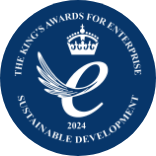Q & A: “What are the best health and safety practices when working with lead?”
Each month we answer your product and industry questions. This month you asked:
“What are the best health and safety practices when working with lead?”
Much like many building materials in the construction industry, there are standard best practices that must be adhered to in order to remain healthy and safe when working with lead.
If best practice is not followed, and the level of lead in your body gets too high, it can lead to nausea, stomach pains, anaemia and loss of weight, while continued uncontrolled exposure could cause more serious symptoms.
Thankfully instances like this have become a thing of the past. Since the introduction of the first edition of the Control of Lead at Work Regulations in 1980, exposure to lead has become very much controlled.
Today, the industry works from the Third Edition of these regulations. Published in 2002, it outlines very prescriptive regulations and sets out control measures employers must put in place to protect employees who are exposed to lead. As part of this, employers are required to carry out risk assessments measuring the significance of the exposure of lead to their workforce.
Regardless of a worker’s level of exposure to lead, if best practices are followed, there is no risk to health whatsoever.
Diane Rainsford, Midland Lead’s risk and performance manager, provides her essential health and safety best practices when working with lead:
- Wear protective gloves at all times while handling lead
- Do not eat, drink or smoke while working with lead
- Wash hands and face thoroughly before eating, drinking or smoking
- Wear clean workwear every day – consider items of clothing such has hats, which may allow lead dust to build up over a period of time if unwashed, risking lead dust dropping into food while eating if disturbed i.e. when scratching your head
- Workers who are exposed to lead dust, especially those who weld lead, should ensure that they wear suitable respiratory protective equipment (RPE)
- When an employer conducts a risk assessment, which concludes that an employee is required to wear a mask for protection, the mask must be ‘face-fit tested’. In this instance, for a mask to fit correctly the wearer must be clean shaven. If the worker is not clean shaven there are alternative products on the market; speak to your employer or health and safety representative
- Avoid holding copper nails in your mouth while fixing lead
- Avoid food that you need to use your hands to eat, f.e. use a fork to eat or wrap sandwiches in something so you can avoid touching it, such as tin foil
- Roll cigarettes at home before coming to work
- Ensure any drinks have lids on them – don’t drink out of open cups or cans which can be left lying around and become contaminated with lead dust
- If you are working on a site and do not have access to water for washing you should ask your employer to supply a suitable alternative such as hand wipes
If you have any queries or concerns about the health and safety aspects of working with lead or would like to learn more, please don’t hesitate to get in touch with us on +44(0)1283 224 555.


